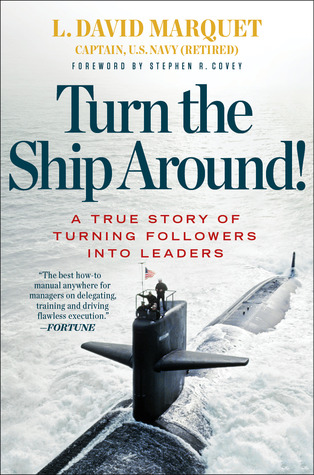More on this book
Community
Kindle Notes & Highlights
Read between
February 3 - March 31, 2015
Those who take orders usually run at half speed, underutilizing their imagination and initiative.
in a leader-follower structure, the performance of the organization is closely linked to the ability of the leader. As a result, there is a natural tendency to develop personality-driven leadership.
The leader-leader model not only achieves great improvements in effectiveness and morale but also makes the organization stronger. Most critically, these improvements are enduring, decoupled from the leader’s personality and presence. Leader-leader structures are significantly more resilient, and they do not rely on the designated leader always being right. Further, leader-leader structures spawn additional leaders throughout the organization naturally. It can’t be stopped.
Control, we discovered, only works with a competent workforce that understands the organization’s purpose. Hence, as control is divested, both technical competence and organizational clarity need to be strengthened.
When the performance of a unit goes down after an officer leaves, it is taken as a sign that he was a good leader, not that he was ineffective in training his people properly.
People who are treated as followers treat others as followers when it’s their turn to lead.
You can’t invoke leader-follower rules to direct a shift from leader-follower to leader-leader.
SHORT, EARLY CONVERSATIONS is a mechanism for CONTROL. It is a mechanism for control because the conversations did not consist of me telling them what to do. They were opportunities for the crew to get early feedback on how they were tackling problems. This allowed them to retain control of the solution. These early, quick discussions also provided clarity to the crew about what we wanted to accomplish. Many lasted only thirty seconds, but they saved hours of time.
What you want to avoid are the systems whereby senior personnel are determining what junior personnel should be doing.
THINK OUT LOUD is a mechanism for CONTROL because when I heard what my watch officers were thinking, it made it much easier for me to keep my mouth shut and let them execute their plans.
If all you need your people to do is follow orders, it isn’t important that they understand what you are trying to accomplish.
as authority is delegated, technical knowledge at all levels takes on a greater importance. There is an extra burden for technical competence.
If all you need to do is what you are told, then you don’t need to understand your craft. However, as your ability to make decisions increases, then you need intimate technical knowledge on which to base those decisions.
Control without competence is chaos.
Taking care of your people does not mean protecting them from the consequences of their own behavior. That’s the path to irresponsibility. What it does mean is giving them every available tool and advantage to achieve their aims in life, beyond the specifics of the job.
Empowerment does not work without the attributes of competence and clarity.
You know you have an emancipated team when you no longer need to empower them. Indeed, you no longer have the ability to empower them because they are not relying on you as their source of power.


